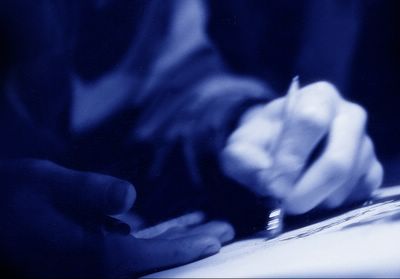"I don't like television for several reasons--censorship mostly. In television they want you to be homogenized. They want zero point of view."
-John Carpenter, 1980
Considering his obvious disdain for the idiot box, John Carpenter managed to create one of his most effective, and unjustly rare, psycho-shockers with the 1978 NBC Movie-Of-The-Week "Someone's Watching Me!", the other "lost" Carpenter film (along with his USC short "The Resurrection Of Bronco Billy") which for reasons unknown has still not been released on home video nearly 30 years after its initial, and wildly successful, broadcast.
Don't let the hysterical title and cheesy exclamation point put you off; this is no USA Network howler with Patty Duke fighting off the high school rapist guidance-counselor. Carpenter's boob-tube rival to his own "Halloween" transcends its prime-time limitations and scores as one of the scariest made-for-TV efforts ever.
Originally intended as a feature for Warner Bros. entitled "High Rise", the studio thought the concept was too "small" for the big screen, but ideal for their MOW division. The project provided Carpenter with many firsts: his first network television movie, his first experience with a union crew, and his first wife, Adrienne Barbeau.
The simple-but-surefire premise allows the writer-composer-director to indulge in what he's always done best: to take strong characters, isolate and entrap them, and force them to rely on their wits survive the night against a faceless enemy. Lauren Hutton plays Leigh Michaels, a 29 year-old New York television director who relocates to Los Angeles to start life anew after a relationship has soured. Moving into the ominously named "Arkham Towers" (a nod to H.P. Lovecraft, obviously), Leigh vocally struggles to become comfortable with the single life and soon finds work directing live television at KJHC-TV. She finds a friend in the openly gay Sophie (Adrienne Barbeau, taking a real chance in the pre-"Ellen" late-70s), but remains opaque and standoffish to others, especially men. Reluctant to become intimate with nice-guy UCLA Philosophy professor Paul Winkless (David Birney), Leigh finds companionship in another perverse way. From her first day in the building, she's been receiving round-the-clock telephone calls from an anonymous man who claims he's watching her very closely. Soon, gifts begin to arrive, under the auspices of a phony travel company. One of these gifts is a telescope.
Convinced that her invisible stalker lives in a nearby tower, Leigh begins to pinpoint a suspect with the aide of Sophie and Paul, but the investigators, led by Det. Hunt (Charles Cyphers), have nothing tangible on which to build a case ("I can't bust a guy for dialing a couple of wrong numbers!", Hunt explains). An oddball tenant (Len Lesser, "Seinfeld"s Uncle Leo) is charged and banished from the city. But the caller resurfaces and ups the ante. Sophie is murdered as Leigh watches helplessly from the neighboring complex. Leigh discovers surveillance equipment planted around her apartment, and with Paul's help, tracks down her man through the public works department. Eventually, Leigh will have to stop running and face her stalker. But that would mean having to "get close"...
Hutton's "Leigh" is clearly the model for Barbeau's later "Stevie Wayne" from Carpenter's 1980 ghost story "The Fog". Like Leigh, Stevie prefers to cast off the remnants of her old life by moving to a new environment (Antonio Bay from Chicago), immersing herself in her in a semi-voyeuristic profession (radio broadcasting), and maintaining male-female relationships from afar (phone-flirting with weatherman Dan O'Bannon).
Additional Carpenter signatures appear throughout "Someone's Watching Me", and it's fun to see him sharpening his skills as he gains confidence while moving into the mainstream. Clearly, the character Carpenter identifies with most is that of the caller, Herbert Styles. The phantom-like killer is no more or less a "shape" than "Halloween"s Michael Myers is, seemingly omnipresent, darting into shots from out of nowhere, and only briefly displaying his face before falling to his death. The killer's campaign of terror against Leigh is not unlike Carpenter's intentions as a fear-maker: Styles isn't out to simply KILL Leigh, rather he wants to control her as he manipulates her lighting, records her audio, provides her with props, and even composes her in the lens of his telescope.
A master of widescreen compositions, Carpenter had to compensate for the cramped, square TV frame with a constantly moving camera and inventive editing, including complex combinations of subjective POV's, overhead shots, and Hitchcockian cross-cutting over multiple locations ala "Rear Window" (also evidenced in his superior "Masters Of Horror" episodes "Cigarette Burns" and "Pro-Life").
Two chilling sequences stand out: knife-wielding Leigh's pursuit of a suspect through an underground garage, and the stylish murder of Sophie in her friend's apartment as Leigh watches through a telescope in the killer's lair. Regrettably, the string-heavy score by Harold Sukman (modeled heavily on Bernard Hermann, perhaps at the director's request) is too overwrought and renders some of Carpenter's subtler moments shrill and obvious.
Sure, we all know someone who "claims" to have seen it, but the sad reality is that this minor gem is about as easy to find as Jerry Lewis' "Day The Clown Cried". Until the folks at Warner appreciate the loyalty and the buying power of the Carpenter fanbase (there are several online petitions going), the truly committed will have to make due with sporadic late-night showings and the bootleg "gray market" (which is where I finally scored my copy after a literal 12 year quest---but trust me, you can get it on the web).
Be sure to check out the other offerings at The John Carpenter Effect: A Blog-A-Thon, hosted by The Lazy Eye Theater.




